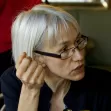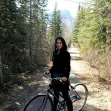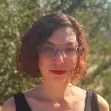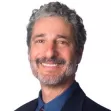Social / Demographics
Planning for People
Instead of planning cities around shiny, tomorrowland dreams of our own invention, how about planning them around something we can count on: the needs of people! Complete with a groovy, vintage planning video mash-up.
Where to Find a Date for Tomorrow
Trulia has evaluated the ratios of men and women living alone in America's largest metros and neighborhoods to determine the best bets to find an available mate from the opposite sex. Guys, there's not much time to book your ticket to D.C....
Should Rio's Event-Oriented Investment Be Spread More Widely?
As Rio de Janiero prepares for the 2014 World Cup and 2016 Summer Olympics, the city is pursuing several "flagship urban renovation and transportation projects." Should this investment extend to the millions living in low-income bedroom communities?
Connections, Community, and the Science of Loneliness
Can urban form help address the loneliness that so often accompanies aging? In a new blog post, Hazel Borys examines some remedies for severed connections.
Is Bloomberg to Thank for New Yorkers' Increasing Life Expectancies?
New Yorkers can expect to live eight years longer than they could just 20 years ago. Do Mayor Bloomberg's policies and initiatives deserve some credit? A mounting body of evidence ties urban form to human health.
Demographer: Ideal California Population Would Be 20 Million, But....
...38 million people are already here, explains USC Professor Dowell Myers in response to the question, "Is California's growth slow-down a problem?" Myers new research is on the implications of the state's baby bust.
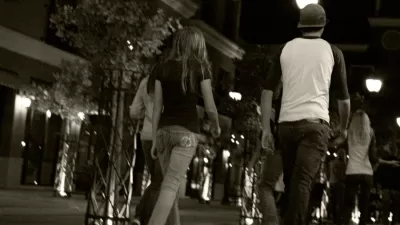
The Lost Downtown Demographic
Revitalizing downtowns requires appealing to all demographic and, specifically, age groups. Diversifying entertainment options will allow all groups to enjoy the activities associated with downtowns.
An Appraisal of Ed Koch's Impact on New York
Former New York City mayor Ed Koch passed away on Friday at the age of 88. For the popular figure who was known for stopping constituents on the street to ask, “How’m I doin’?”, Joseph Berger endeavors to deliver an answer.
Housing Recovery Gains Momentum, But Are We in for a Bumpy Ride?
While the housing market showed signs of improvement last year, economists are now confident that a recovery is underway. Housing currently adds 13 percent to the nation's economic growth, but is this a good thing?
Talent Clustering: A Wide or Narrow Benefit?
Experts have disagreed about the net effect of America's increasing clustering of highly skilled and affluent citizens in a relatively small number of metro areas. Richard Florida examines who benefits and who loses from this process.
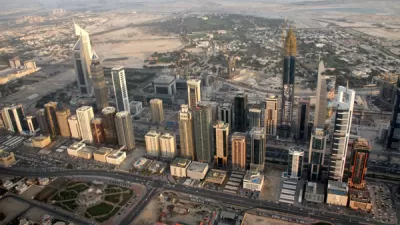
The Emerging Asian City: An Interview with Vinayak Bharne
The publication of the 24 chapter volume “The Emerging Asian City: Concomitant Urbanities & Urbanisms”, brings together some of the most significant emerging voices and thoughts on the forces and phenomenologies shaping urban Asia today.
Community Dynamics: Stoking or Choking Collective Planning Efforts?
Does your community allow the perfect to become the enemy of the good? Scott Doyon kicks off an ongoing look at community-unfriendly behaviors.
Stop Segregating the Rich! Fighting Displacement Fights Crime
Isolating poor residents from rich ones is not only bad for those being segregated, it leads to the worst outcomes for a city as a whole. Fighting displacement results in less crime and more stable and healthy communities.
Can Planning Policies Solve India’s Gender Divide?
As recent headlines reveal the insecurity faced by women in India’s largest cities, the role – and responsibility – of urban planning is being questioned.
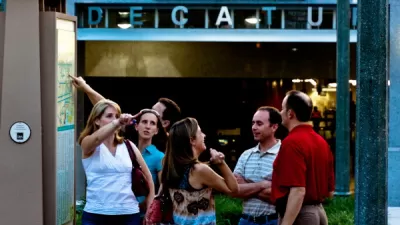
Does Transit Build Stronger Communities?
The results of a new poll conducted for The Atlanta Journal-Constitution show that even in a notoriously sprawling metro (and perhaps more so), transit riders have a stronger connection to their neighborhoods and the larger region.
New York Goes to the Dogs
In its dogged pursuit of the most important stories in New York, WNYC has fetched the dog licensing records of the City's Department of Health and Mental Hygiene and produced an informative map of the most common names and breeds by zip code.
India Comes to Grips With the Challenges of Urbanization
In the first entry in an eight-part series, Aparna Piramal Raje explores the challenges facing an urbanizing India that lacks sufficient planning to ease the country's transition from a nation of villages.
Crime Skyrockets After City Bankruptcy
San Bernardino was the third city in California to file for bankruptcy last year. Within the past year it has descended from a model of crime reduction to a crime-plagued city.
Data Shows Inclusionary Housing Is...Inclusionary!
Advocates of inclusionary zoning have something to smile about. A new report from the Rand Corporation confirms that the housing produced by these zoning policies does in fact create or preserve affordable housing in areas of low poverty.
Chief Chinese Economist Calls For "Two-Child" Policy
China's slowing economy has prompted calls from economists to reconsider the "one-child" policy that has contributed to a shrinking labor pool. It's annual population growth rate was .57% for 2000-2010. By comparison, the U.S. rate was .97%
Pagination
Urban Design for Planners 1: Software Tools
This six-course series explores essential urban design concepts using open source software and equips planners with the tools they need to participate fully in the urban design process.
Planning for Universal Design
Learn the tools for implementing Universal Design in planning regulations.
Heyer Gruel & Associates PA
JM Goldson LLC
Custer County Colorado
City of Camden Redevelopment Agency
City of Astoria
Transportation Research & Education Center (TREC) at Portland State University
Jefferson Parish Government
Camden Redevelopment Agency
City of Claremont



























